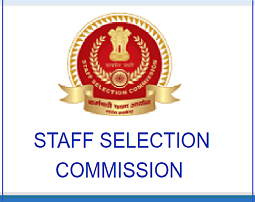1. Eligibility for SI Delhi Police
Educational Qualification
Graduation in any Discipline or its equivalent from any UGC recognized university. For SI in Delhi Police, male candidates must possess a valid Driving License for LMV.
Age Limit
The candidate’s age shall be between 20 years to 25 years. Age relaxations according to the government norms are applicable.
| Category | Age Relaxation |
| SC/ST | 5 years |
| OBC | 3 years |
| Ex-servicemen | 3 years after deduction of the military service
rendered from the actual age as on the closing date. |
| Widows, divorced women and women judicially
separated from their husbands and who are not re-married. | Up to 35 years of age |
| Widows, divorced women and women judicially
separated from their husbands and who are not re-married. (SC/ ST) | Up to 40 years of age |
| Departmental candidates (Unreserved) who have
rendered not less than 3 years of regular and continuous service as on closing
date | Up to 30 years of age |
| Departmental candidates (OBC) who have rendered
not less than 3 years of regular and continuous service as on closing date. | Up to 33 years of age |
| Departmental candidates (SC/ ST) who have
rendered not less than 3 years of regular and continuous service as on closing
date. | Up to 35 years of age |
Medical Standards
Physical Standards
| Category of Candidates | Height (in cm) | Chest (in cm) Unexpanded | Chest (in cm) Expanded |
| For male candidates only (UR) | 170 | 80 | 85 |
| For candidates belonging to Hill areas of Garhwal,
Kumaon, Himachal Pradesh, Gorkhas, Dogras, Marathas, Kashmir Valley, Leh &
Ladakh regions of J&K, North-Eastern States
and
Sikkim. | 160 | 80 | 85 |
| For all candidates belonging to Scheduled
Tribes | 162.5 | 77 | 82 |
| For Female candidates only (UR) | 157 | - | - |
| For female candidates belonging to Hill areas of Garhwal,
Kumaon, Himachal Pradesh, Gorkhas, Dogras, Marathas, Kashmir Valley, Leh
and Ladakh regions of J&K, the North-Eastern States and Sikkim | 155 | - | - |
| For all female candidates belonging to Scheduled Tribes | 154 | - | - |
Eligibility for Female Candidates
Exam Pattern
Physical Standard Test and Physical Endurance Test
Physical Standard Test (for all Posts)
| Category of Candidates | Height (in cm) | Chest (in cm) Unexpanded | Chest (in cm) Expanded |
| For male candidates only (UR) | 170 | 80 | 85 |
| For candidates belonging to Hill areas of Garhwal, Kumaon, Himachal Pradesh, Gorkhas, Dogras, Marathas, Kashmir Valley, Leh and Ladakh regions of J&K, North-Eastern States and Sikkim. | 160 | 80 | 85 |
| For
all candidates belonging to Scheduled
Tribes | 162.5 | 77 | 82 |
| For
Female candidates only (UR) | 157 | - | - |
| For
female candidates
belonging to Hill areas of Garhwal, Kumaon, Himachal Pradesh, Gorkhas, Dogras, Marathas, Kashmir Valley, Leh and Ladakh regions of J&K, North-Eastern States and Sikkim | 155 | - | - |
| For
all-female candidates belonging to Scheduled
Tribes | 154 | - | - |
Physical Endurance Test (PET)
For male candidates only
• 100-meter race in 16 seconds
• 1.6 km race in 6.5 minutes
• Long Jump- 3.65 meters in 3 chances
• High Jump- 1.2 meters in 3 chances
• Shot put (16 Lbs)- 4.5 meters in 3 chance
• For female candidates only
• 100-meter race in 18 seconds
• 800-meter race in 4 minutes
• Long Jump- 2.7 meters in 3 chances
• High Jump- 0.9 meters in 3 chances
• PST/ PET will not carry any marks but will be of qualifying nature.
Paper 1 has four sections like General Intelligence and Reasoning, General Knowledge, Quantitative aptitude and English Language.
| Subjects | Questions | Marks |
| General intelligence
and reasoning | 50 | 50 |
| General knowledge and
general awareness | 50 | 50 |
| Quantitative aptitude | 50 | 50 |
| English | 50 | 50 |
| Total marks | 200 |
| Subjects | No. of Questions | Marks |
| English language
& comprehension | 200 | 200 |





Contrary to popular belief, Lorem Ipsum is not simply random text. It has roots in a piece of classical Latin literature College in Virginia ?
It is a long established fact that a reader will be distracted by the readable content of a page when looking at its layout. The point of using Lorem Ipsum.